Royal Masonic Institution for Boys, London / Hertfordshire
In 1798, arrangements were made for clothing, educating, and apprenticing the sons of deceased and unfortunate Freemasons, in private schools, adjacent to the residences of their relatives. Plans for a dedicated institution for the boys eventually moved towards fruition in 1856, when a mansion and grounds were purchased at Wood-green, Tottenham. The building, after some alteration, was inaugurated as a school in the year 1857, with twenty-five boys being admitted. The accommodation was soon enlarged to house seventy boys, then on 8 August 1863 the foundation stone was laid for a large new building. The formal opening of the new block took place on 8 July 1865. The total capacity of the establishment was then about 250 places. Admission was by election of the charity's subscribers.
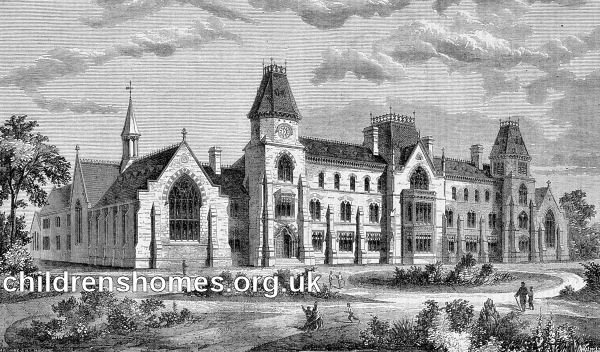
Royal Masonic Institution for Boys, Wood Green, c.1865. © Peter Higginbotham
In 1890, the object of the institution was to give — together with maintenance and clothing — 'a sound English commercial education, with the addition of French and German, and in the upper division the classics and advanced mathematics, to the sons of Freemasons who, from altered circumstances, require this assistance.' No boy was eligible for admission unless his father had been a subscribing member to a Masonic Lodge for seven years, except in case of death, fire, shipwreck, or of his having become afflicted during such membership with infirmity, permanently incapacitating him from earning a livelihood. Boys were admitted from the age of 7 years and were retained until they were 15. Certificates were required for marriage of parents, birth of candidate, and death of father (when deceased). An undertaking was required from two respectable householders for removal of inmate if and when found unsuitable, and for burial in case of death. Boys were also clothed and educated out of the establishment, for whom the Committee could pay an amount not exceeding £20 a year.
By the end of the century, the Wood Green premises had become too small and the 67-acre Grove Park estate at Bushey, Hertfordshire, was purchased for the construction of a new building for 400 boys. The foundation stone was laid on 12 May 1900, and the building came into operation in January 1903.
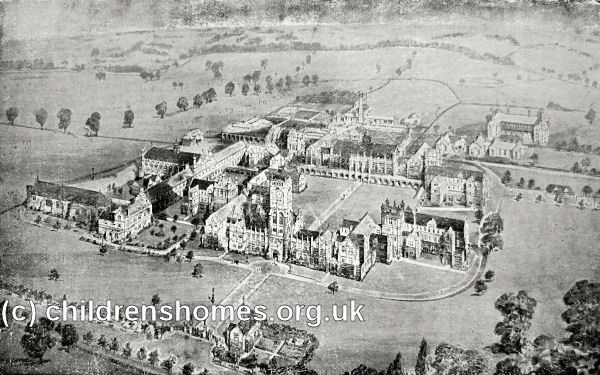
Royal Masonic Institution for Boys, Bushey, aerial view. © Peter Higginbotham
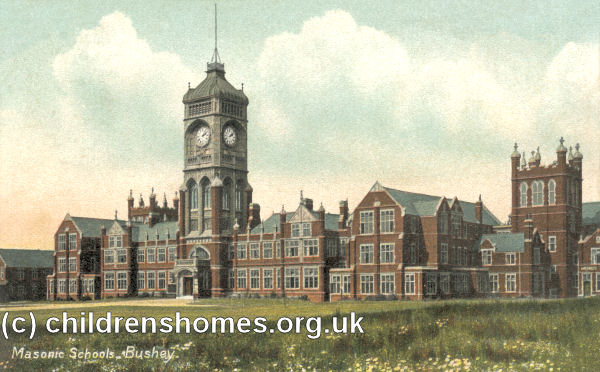
Royal Masonic Institution for Boys, Bushey. © Peter Higginbotham
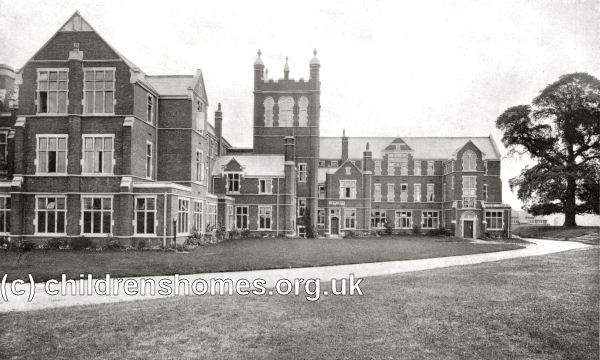
Royal Masonic Institution for Boys, Bushey, one of the boys' houses. © Peter Higginbotham
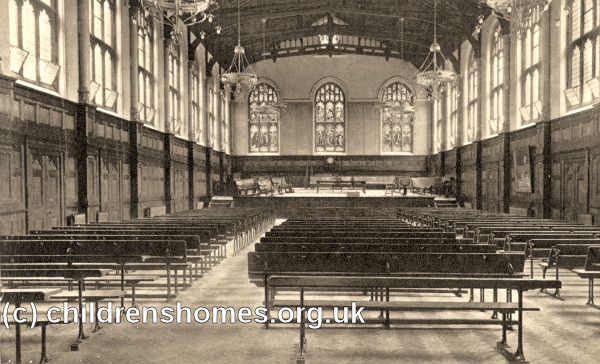
Royal Masonic Institution for Boys, Bushey, assembly hall. © Peter Higginbotham
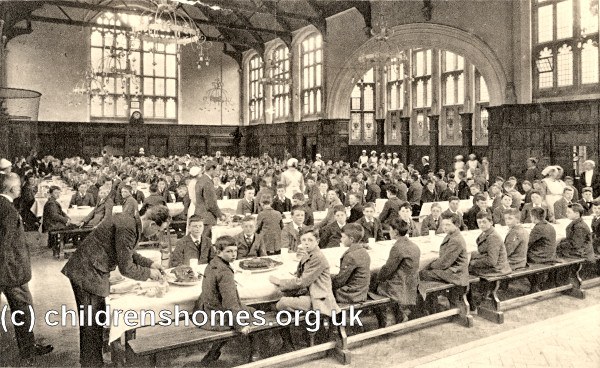
Royal Masonic Institution for Boys, Bushey, dining hall. © Peter Higginbotham
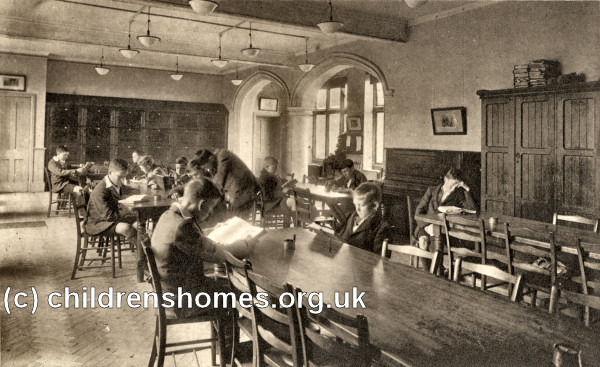
Royal Masonic Institution for Boys, Bushey, house room. © Peter Higginbotham
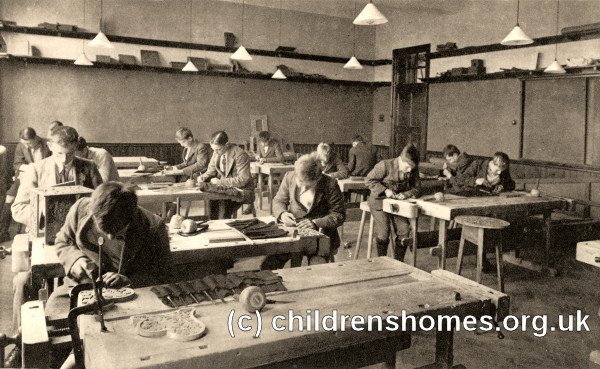
Royal Masonic Institution for Boys, Bushey, wood-carving class. © Peter Higginbotham
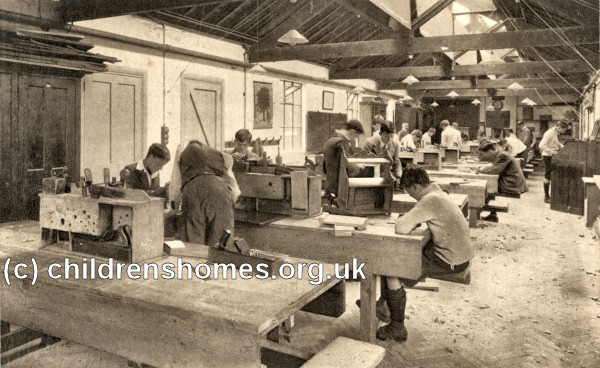
Royal Masonic Institution for Boys, Bushey, carpentry class. © Peter Higginbotham
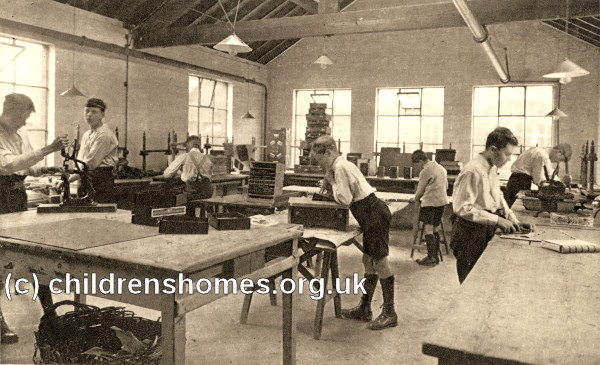
Royal Masonic Institution for Boys, Bushey, bookbinding class. © Peter Higginbotham
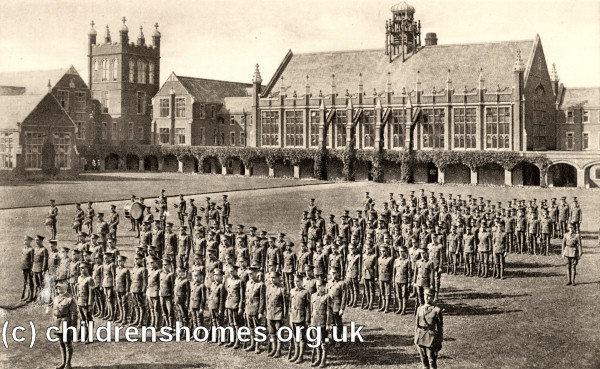
Royal Masonic Institution for Boys, Bushey, cadet corps. © Peter Higginbotham
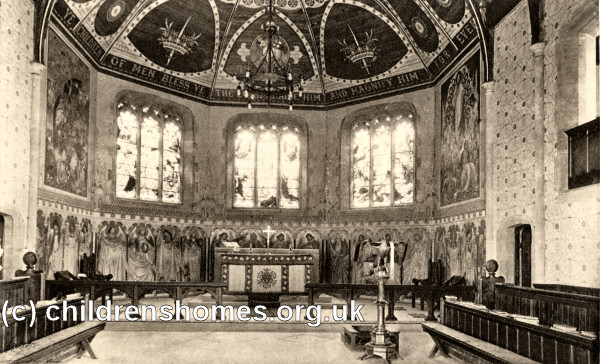
Royal Masonic Institution for Boys, Bushey, chapel chancel. © Peter Higginbotham
In 1929, a Junior School was erected a short distance away on Falconer Lane. By 1939 the two schools could accommodate a total of 800 boys aged from 8 to 18 years. In the late 1950s and 1960s numbers declined and the two boys schools merged in 1970, then accepting boys from the age of 11.
The school closed in 1977. The main school, on The Avenue, has now been refurbished for residential use. The Junior Branch on Falconer Road is now home to the Bushey Academy.
Records
Note: many repositories impose a closure period of up to 100 years for records identifying individuals. Before travelling a long distance, always check that the records you want to consult will be available.
- [an error occurred while processing this directive]
Bibliography
- Higginbotham, Peter Children's Homes: A History of Institutional Care for Britain s Young (2017, Pen & Sword)
Links
- None identified at present.
Except where indicated, this page () © Peter Higginbotham. Contents may not be reproduced without permission.


